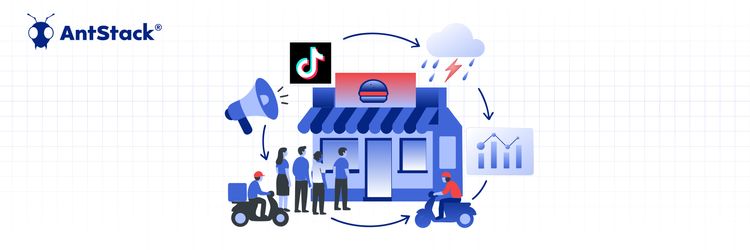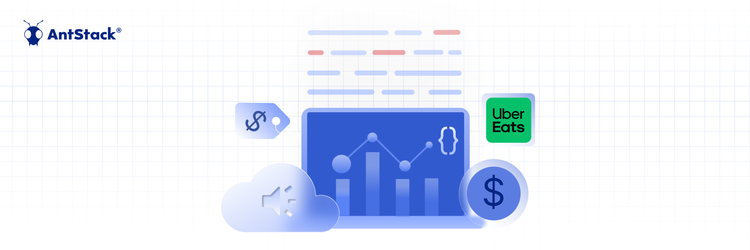Why does feature velocity grind to a halt as the business scales? We figured this out for QSRs. The culprit isn't what most leaders expect. It's not team size, technical debt, or even legacy systems. It's how we architect categories within RIS middleware.
When I took a closer look at a recent engagement with a global fast-food chain specializing in Mexican cuisine, I witnessed this problem firsthand.
The hardcoded categories were quietly killing your ability to move fast and what to do instead. Their serverless RIS on AWS had become a feature adoption bottleneck. Every new category: whether Address, Store Status, Hours, or Back-of-House features, all of them required hardcoded Lambda functions, manual webhook updates, and weeks of development cycles.
The Architecture Decision That Changes Everything
Traditional RIS architectures treat categories as static, backend-only concerns. This creates what I call "category rigidity". It develops a cascade of dependencies that turns simple operational changes into complex engineering projects.
Here's the shift we implemented: Dynamic Category Schema Architecture.
Instead of hardcoding categories, we rebuilt the system around a category service that allows administrators to define schemas via APIs. Categories become configurable objects, not deployment dependencies.
The transformation was immediate:
- Eliminated hardcoded Lambda functions for each new category
- Reduced webhook integration complexity through dynamic category identifiers
- Enabled category-level versioning for safer rollouts and rollbacks
The Category Velocity Framework
To understand the architectural shift required, we developed what I call the Category Velocity Framework. It is a first-principles analysis of how category management impacts engineering velocity in RIS systems.
| Category Architecture | Implementation | Impact on Engineering Velocity |
| Traditional (Hardcoded) | Hardcoded Lambdas per category | Deployment blockers, dev cycles wasted on boilerplate |
| Manual webhook integration | Testing delays, error-prone updates | |
| No category-level versioning | Risky rollouts, rollback complexity | |
| Dynamic (Schema-Based) | API-driven schema definition | Operations teams can create categories without engineering |
| Dynamic webhook routing | Single integration handles all category types | |
| Schema versioning | Safe rollouts with automated rollback capabilities |
Now invert that.
With a Dynamic Schema Architecture, each category becomes a configurable object defined via APIs. What used to require multiple Lambda functions, deployments, and QA loops can now be updated with a single schema change, by your ops team, not engineering.
Multi-Region Resilience as a Competitive Advantage
Single-region RIS deployments create existential business risk. During our implementation, we designed a multi-region architecture across east and west regions that delivered:
Routing Intelligence: Amazon Route 53 with failover policies automatically redirect traffic during regional failures within 60-120 seconds.
Global Data Consistency: DynamoDB Global Tables ensure restaurant master data and category schemas remain synchronized across regions in real-time.
Event Duplication Prevention: Active Region Values stored in DynamoDB records ensure Lambda functions process events only in the designated active region, preventing redundant updates.
The result: near-zero downtime during regional outages, transforming operational resilience from a cost center into a competitive advantage.
Query API Optimization: The Performance Multiplier
Large payload handling in RIS query APIs often becomes a performance bottleneck. I've seen systems crash under heavy loads, creating expensive operational overhead.
My approach focuses on payload regulation at the architectural level:
- API Gateway route reconfiguration to limit payload size and improve response times
- Chunked data processing for large datasets through asynchronous Lambda functions
- Cost optimization by eliminating expensive processing overheads
This isn't just about performance, it's about predictable scalability. When your RIS can handle traffic spikes without infrastructure management overhead, you've achieved true operational leverage.
The Serverless Advantage in RIS Architecture
The complete serverless transformation I implemented eliminated infrastructure management while enabling automatic scaling:
Event-Driven Processing: AWS EventBridge serves as the central event bus, routing webhook-triggered events to appropriate services based on dynamic category rules.
Stateless Architecture: All backend logic moves to AWS Lambda, eliminating server dependencies and enabling pay-per-use cost models.
Unified Integration: API Gateway provides a single entry point for all webhook and query operations, simplifying downstream system integration.
Measurable Business Impact
The results from this architectural shift were significant:
Development Velocity: New categories integrate without codebase changes, freeing engineering resources for higher-value platform work.
Operational Resilience: Multi-region failover ensures continuous service availability during regional outages.
Cost Efficiency: Simplified query API reduces operational overhead while handling larger datasets more efficiently.
Timeline Efficiency: The entire solution was implemented in 2.5 months by a 2-engineer team.
The Shift: From Tickets to Platforms
The broader lesson from this experience challenges how we think about RIS architecture. Traditional approaches optimize for immediate feature delivery. Dynamic schema architecture optimizes for feature velocity over time.
When categories become configurable rather than hardcoded, your RIS transforms from a development bottleneck into a business enabler. Operations teams can adapt store-level features without engineering intervention. Product teams can test new concepts without deployment dependencies.
This architectural philosophy of building platforms that enable business velocity rather than just delivering features represents the fundamental shift modern QSR brands need to achieve sustainable competitive advantage.
The Path Forward
If your RIS requires weeks of development time for operational changes, the problem isn't in your team or processes. It's in your architecture. Dynamic schema architecture with multi-region resilience isn't just about technical optimization—it's about building systems that scale with your business ambitions.
The question isn't whether to make this shift, but how quickly you can implement it before your competitors do.
If you want to build a renewed Restaurant Information System, Talk to us









